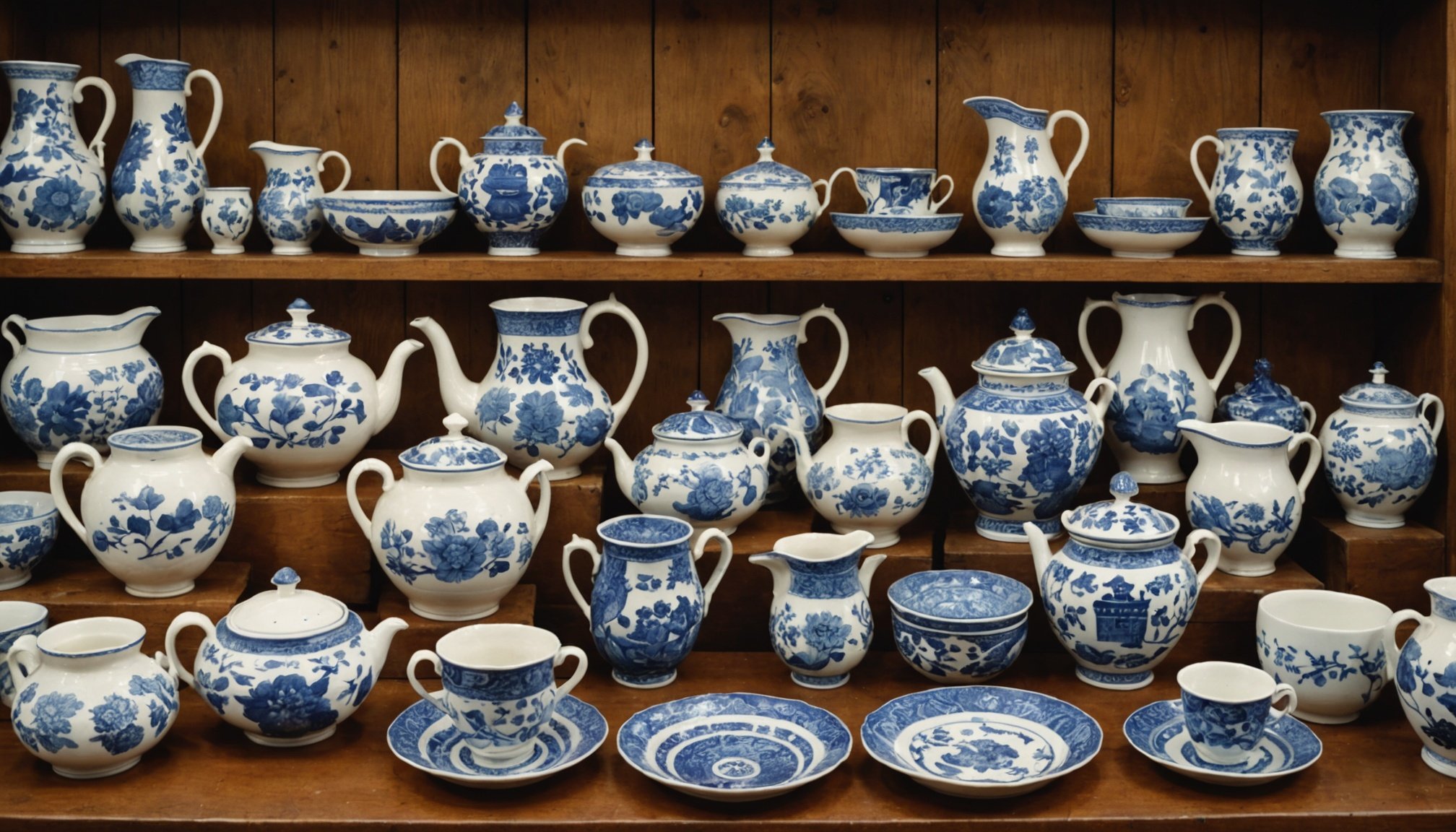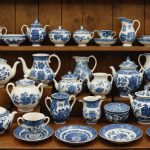Overview of British Ceramics
British ceramics boast a rich history, intertwined with exceptional craftsmanship and deep historical significance. This art form began in early Britain with salt-glazed stoneware and evolved to sophisticated pieces synonymous with British culture. From the humble beginnings in the Neolithic period to the innovative designs of today, British ceramics have continually displayed innovation and adaptation.
Key characteristics of British ceramics include the unique use of local materials and techniques that result in distinct styles and designs. British potters have mastered the art of both form and function, creating pieces that are not only beautiful but also practical. Staffordshire pottery and Delftware are prime examples, recognisable for their traditional techniques and artisanal detail.
Also to discover : Unveil the best uk towns for unforgettable antique market adventures!
The preservation and promotion of British ceramic heritage are crucial. Initiatives focused on education and community engagement help ensure that this rich legacy endures for future generations. Further, understanding and appreciating the craftsmanship involved aids in maintaining a vibrant cultural landscape. Keeping this heritage alive allows us to retain a connection to the past while inspiring future creativity and passion within the ceramic arts.
Key Artists and Styles in British Ceramics
The art of British ceramics is rich with renowned artists and diverse styles that have shaped pottery movements. Josiah Wedgwood, for instance, revolutionised ceramic production during the 18th century with his development of creamware and Jasperware. His innovative approaches earned him the title “Father of English Potters”. Another notable figure is Clarice Cliff, who became famous in the 20th century for her colourful and geometric style that broke traditional boundaries.
Have you seen this : Unearth the best uk cities home to extraordinary heritage railways
Notable British Ceramic Artists
Artists like Wedgwood and Cliff are celebrated for their distinctive contributions to ceramics. Wedgwood’s classical designs introduced a new elegance, while Cliff’s vibrant works brought a modern twist.
Influential Ceramic Styles
Major ceramic styles such as Staffordshire pottery and Delftware exemplify the evolution of British ceramics over time. Staffordshire pottery is characterised by its use of coloured glazes, whereas Delftware is known for its blue and white tin-glazed earthenware.
Impact of Regional Variations
Regional influences have played a significant role in shaping British ceramic styles. For instance, Cornwall’s natural clay deposits have led to unique earthenware pieces, reflecting the geographical diversity across the UK. These regional nuances highlight the versatility and depth of British pottery.
Crafting Engaging Guided Tours
Designing guided tours that captivate and engage participants requires thoughtful planning. Start with an immersive narrative that brings to life the history and evolution of ceramics. Highlight fascinating anecdotes about artisans, like Josiah Wedgwood, to deepen engagement with the material.
Active participation is key. Incorporate hands-on experiences where participants can touch and work with ceramics, such as forming clay or painting pottery. This tactile interaction not only enhances understanding but also creates memorable experiences.
Introduce storytelling techniques to weave personal stories of craftspeople and their innovative processes. Share tales of Clarice Cliff’s bold style changes or how Staffordshire pottery got its unique glazes. These insights elucidate the craftsmanship behind each piece.
Tour guides should encourage questions and facilitate discussions, as this nurtures a shared involvement in the learning process. Concluding with a reflective session on the influence of historical ceramics on modern design can enrich the educational experience.
By intertwining narratives, hands-on activities, and storytelling, guided tours can transform from simple learning experiences into dynamic adventures, enticing participants to delve deeper into the world of British ceramics.
Suggested Itineraries for a Ceramics Tour
Planning well-structured itineraries enhances any ceramics tour, offering a rich sightseeing experience. A key location to include is the Wedgwood Museum, where visitors can explore the legacy of Josiah Wedgwood and view some of his most famous works. The Victoria and Albert Museum also provides insights into British ceramics with an outstanding collection spanning various styles and eras.
Key Locations to Visit
- Wedgwood Museum: Celebrate the ingenuity of Josiah Wedgwood.
- Victoria and Albert Museum: Discover diverse ceramic styles and historical significance.
Sample Itinerary Routes
Design routes that reflect specific themes. For example, a route focusing on significant pottery movements might start at the Staffordshire Potteries Museum, followed by a visit to the British Museum for its Delftware exhibits. Each stop should reveal unique craftsmanship and cultural contexts.
Recommendations for Local Workshops
Incorporate local workshops into your itineraries to give participants a hands-on experience. Pottery making sessions in Stoke-on-Trent allow for interaction with traditional techniques, providing an educational and engaging component to the tour.
Resources for Further Learning
To dive deeper into British ceramics, consider exploring various educational tools. Recommended books such as “The History of British Ceramics” provide comprehensive insights into the craft’s evolution. Documentaries like “Art of Pottery” visually capture the techniques and historical context of ceramics.
Online platforms also offer valuable knowledge. Websites like the British Ceramics Biennial include articles and virtual exhibits, ideal for those interested in further learning. For a more interactive experience, platforms like Udemy provide courses on pottery craft and history.
Community groups such as the Ceramic Society of Great Britain often host events and workshops. These organisations focus on promoting the heritage of ceramics through public engagement and classes. Joining these groups can be a gateway to broader educational experiences and connect learners with like-minded enthusiasts.
These resources serve as starting points for those eager to understand ceramics more thoroughly. By leveraging these tools, enthusiasts can gain a deeper appreciation and understanding of British ceramics’ place in art and culture.










